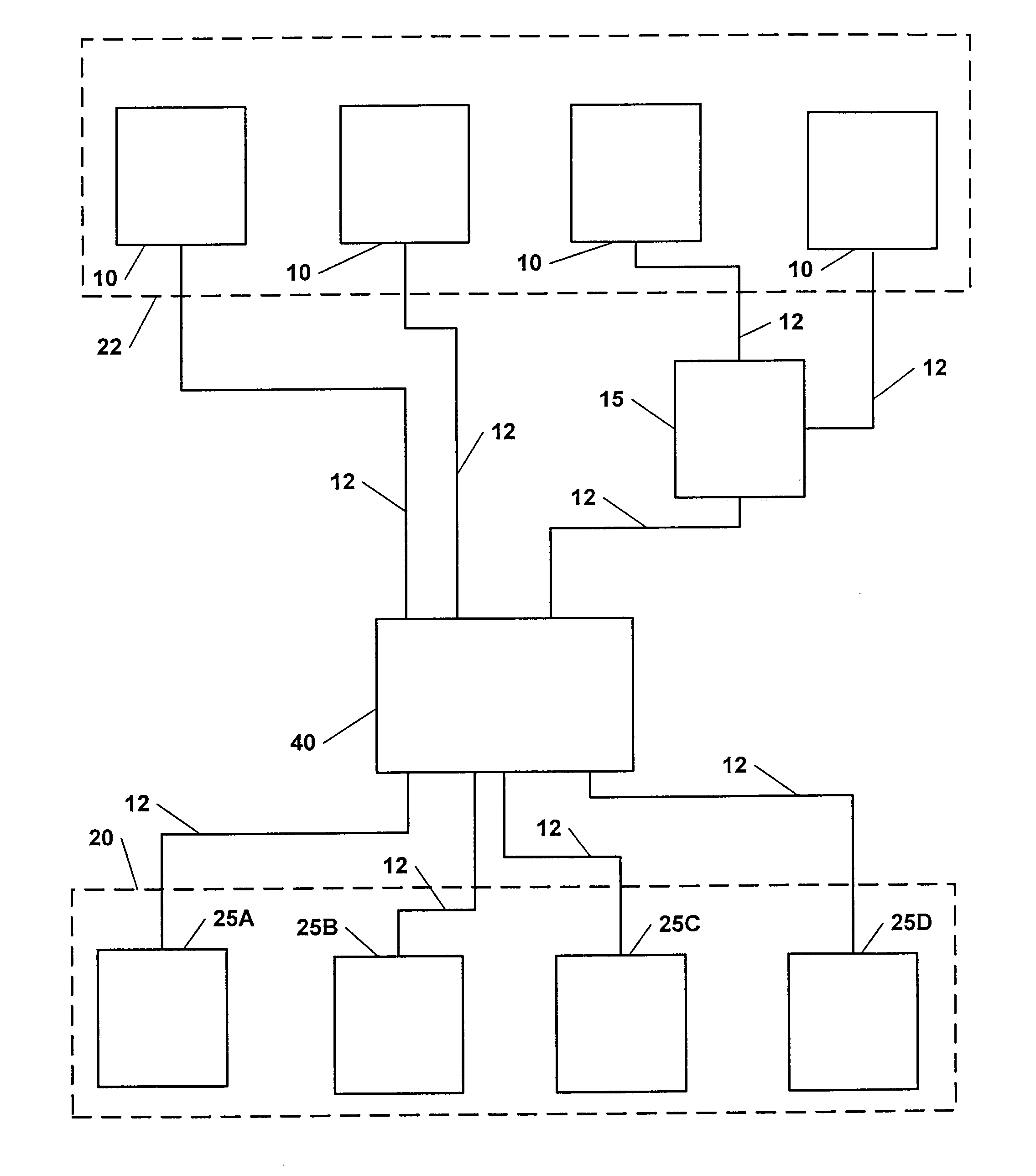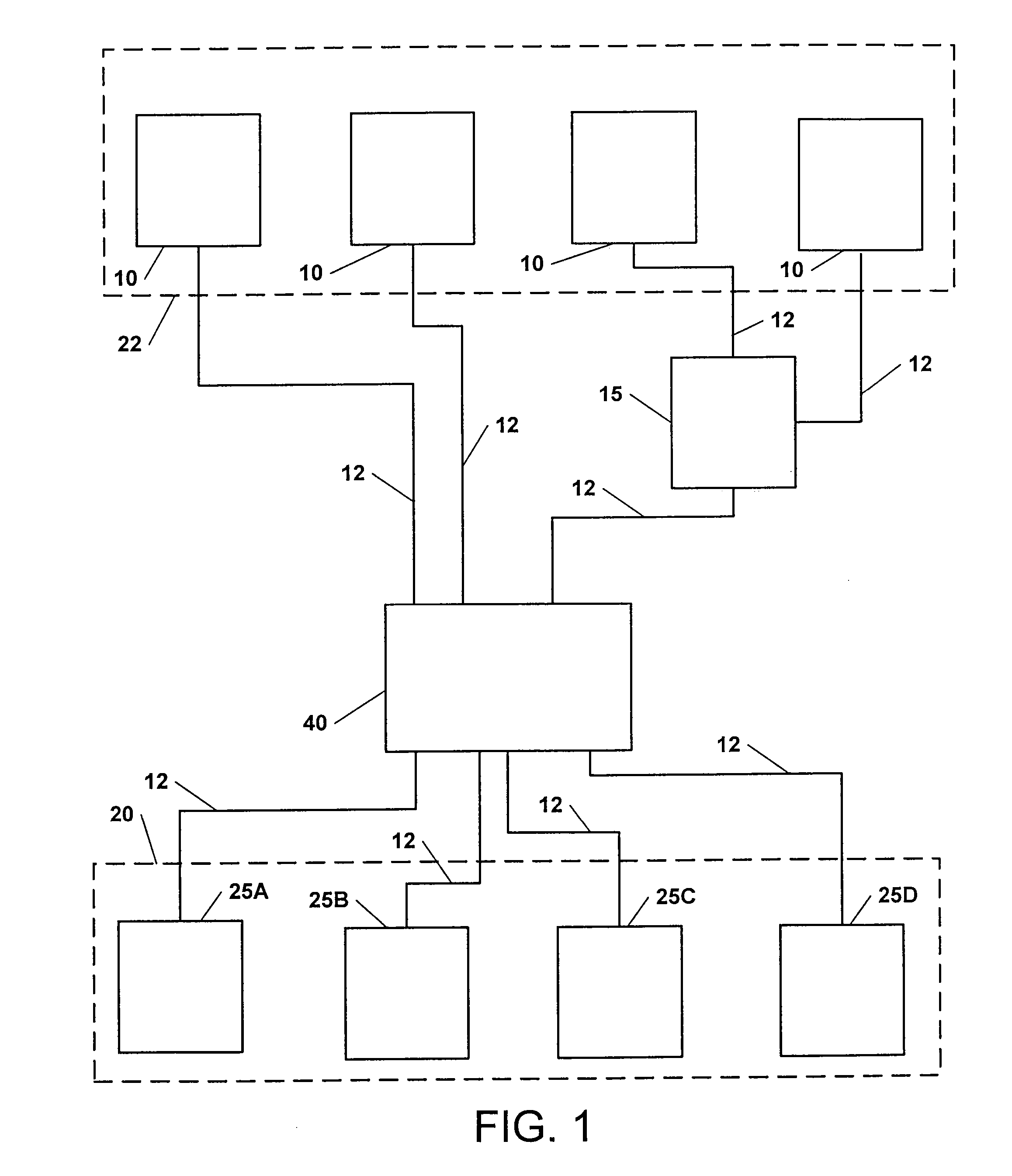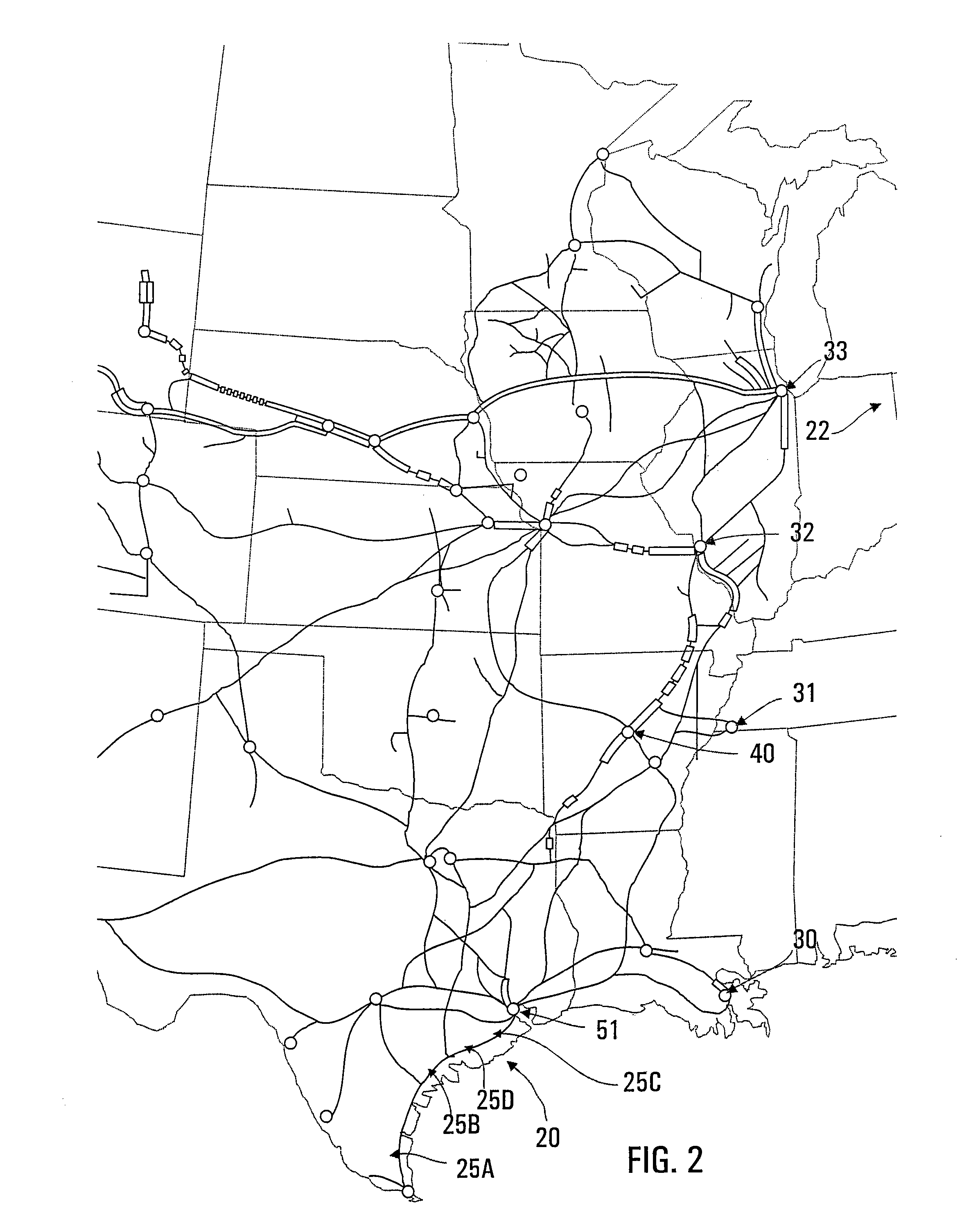System and method for processing and distributing freight containers
a technology for distributing and processing containers, applied in the direction of railway components, railway stations, railways, etc., can solve the problems of insufficient attention to exploring alternative and possibly more efficient paths, insufficient movement of freight cars, and congestion in the rail transportation system, so as to improve the efficiency of utilization of railroad freight cars
- Summary
- Abstract
- Description
- Claims
- Application Information
AI Technical Summary
Benefits of technology
Problems solved by technology
Method used
Image
Examples
Embodiment Construction
[0029]The present invention overcomes the shortcomings of the prior art by providing a system and method for processing and distributing freight containers. Advantages to the present invention include a decrease in capital investments in additional rail cars, trackage, and land. The present invention also provides a standardized method for cleaning cars within an aggregation facility. As well, the present invention optimizes the flow of traffic such that rail car cleaning, inspecting, repairing and certification can take place within a single facility. The present invention is adaptable for use with loaded or unloaded freight cars and other transportation means, including ISO containers, airfreight containers and intermediate containers. For illustrative purposes, a specific instance of the facilities and operation of the invention is described as it relates to covered hopper cars used for the conveyance of polymer resins. However, it will be readily apparent that the principles ill...
PUM
 Login to View More
Login to View More Abstract
Description
Claims
Application Information
 Login to View More
Login to View More - R&D
- Intellectual Property
- Life Sciences
- Materials
- Tech Scout
- Unparalleled Data Quality
- Higher Quality Content
- 60% Fewer Hallucinations
Browse by: Latest US Patents, China's latest patents, Technical Efficacy Thesaurus, Application Domain, Technology Topic, Popular Technical Reports.
© 2025 PatSnap. All rights reserved.Legal|Privacy policy|Modern Slavery Act Transparency Statement|Sitemap|About US| Contact US: help@patsnap.com



